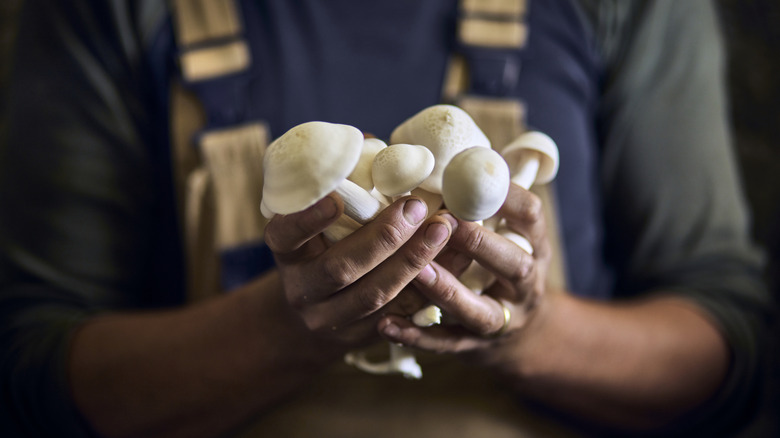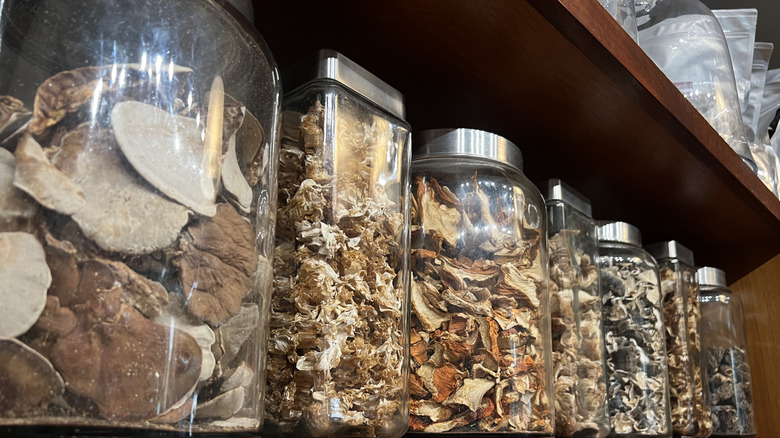You Should Be Wary Of Eating Raw Wild Mushrooms
Many foragers have learned the hard way that eating mushrooms in the wild can turn a fun hike into a medical emergency. That's because many wild mushrooms are actually not edible. Speaking about the foods we should never eat raw, Dr. Jennie Ding, a lifestyle medicine physician at Kale Health Canada, said, "Some wild mushrooms are deadly poisonous and can be easily mistaken for edible types, making raw consumption extremely risky."
So, in the unlikely event you get lost in the woods à la Snow White, remember to steer clear of wild mushrooms, even if you have a bit of knowledge about them. Some highly toxic mushrooms resemble the edible varieties. For instance, the dangerous Amanita phalloides (death cap) looks similar to the more harmless Volvariella volvacea (paddy straw mushroom) in the wild.
Even if you're lucky and pick the edible kind, such as the Boletus edulis (king bolete) or Cantharellus cibarius (chanterelle), eating them raw still comes with consequences. Start Nutrition, LLC, owner and registered dietitian Beth Conlon, PhD, noted that "only about 1% of edible mushrooms are considered safe to eat raw." Some varieties remain hazardous even when cooked The toxins found in the death cap and Amanita virosa (destroying angel) are heat-stable, so they remain viable after cooking.
Some non-toxic mushrooms can also cause digestion problems. According to Ding, this is due to the fibrous substance in their cell wall called chitin. "Even edible varieties can be tough to digest raw and may cause gastrointestinal discomfort," she explained.
How to tell if wild mushrooms are safe to eat?
Restaurant mushrooms taste so delicious and are 100% edible because they are sourced from commercial farms that cultivate them indoors. Establishments that serve dishes featuring foraged mushrooms also likely get their supply from local foragers and specialized suppliers who grow their own products. But identifying edible mushrooms in the wild is tricky, since there is no universally accepted data that details which is which. You might have heard people say, "If it peels easily, it's safe," or, "If animals can eat it, so you can too," but such beliefs can be misleading and harmful.
A forager who unsuspectingly picks an immature A. virosa, thinking it's the edible Agaricus campestris (field mushroom), can end up with toxic liver failure. Mistaking the Galerina marginata (funeral bell) for the edible Kuehneromyces mutabilis (sheathed woodtuft) can have life-threatening consequences due to the former's deadly amatoxins. According to a study published in the journal Mycologia, around 7,500 mushroom poisoning cases were reported yearly between 1999 and 2016, mostly due to accidental consumption of wild mushrooms.
The common symptoms of wild mushroom poisoning include nausea, vomiting, abdominal pain, and diarrhea. Species with hallucinogenic toxins can cause confusion, agitation, and headaches. Those that are extremely poisonous can cause liver failure and death within 48 hours. So it's very important to not only know what to look for when shopping for wild mushrooms, but also to buy only from credible outlets like specialty grocery stores and farmer's markets.

